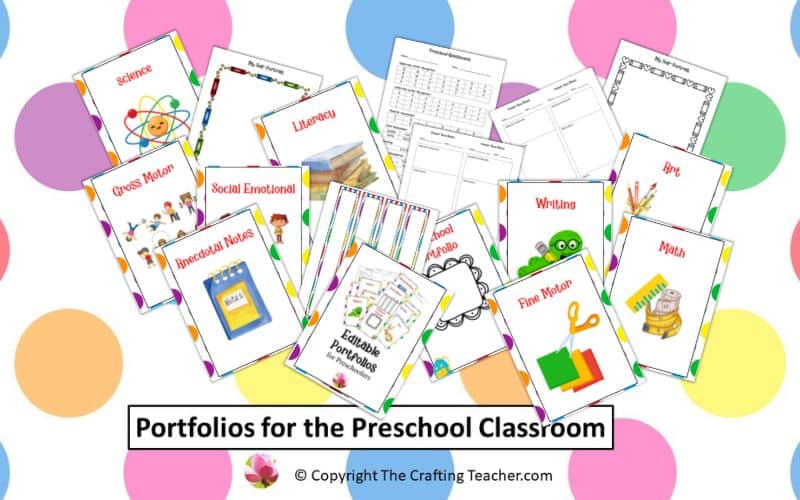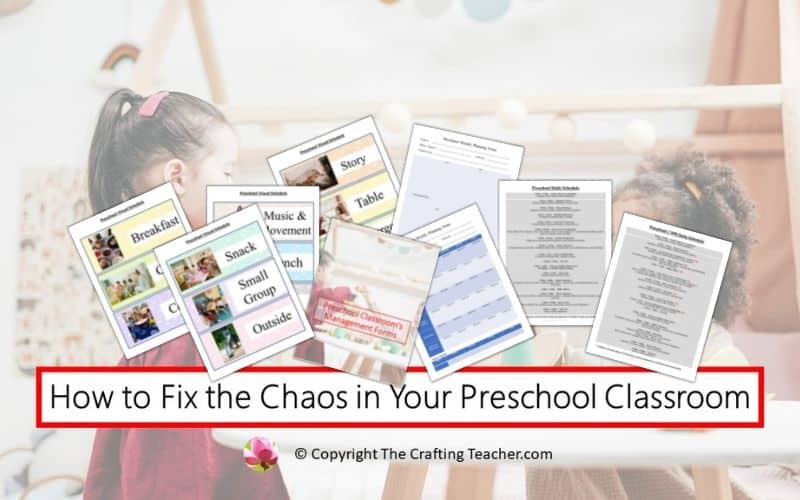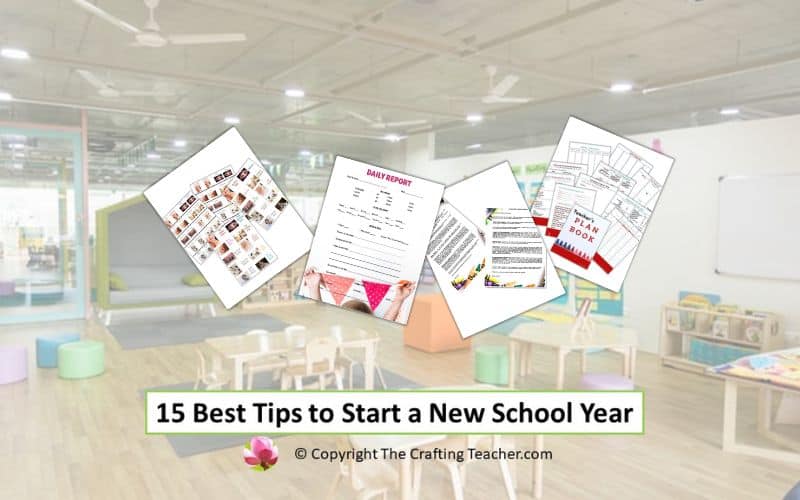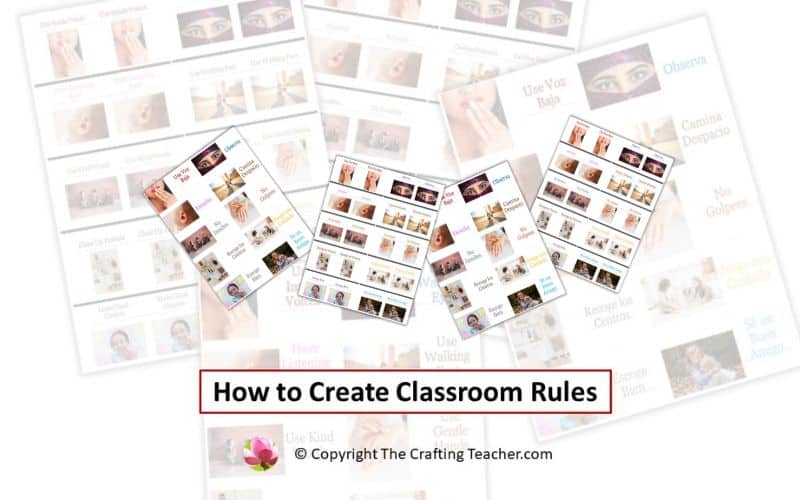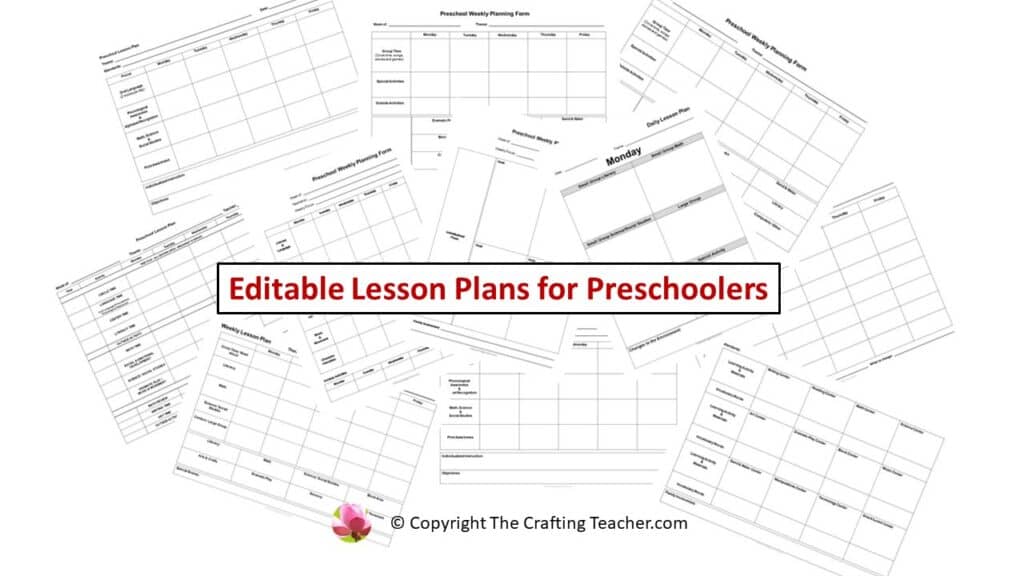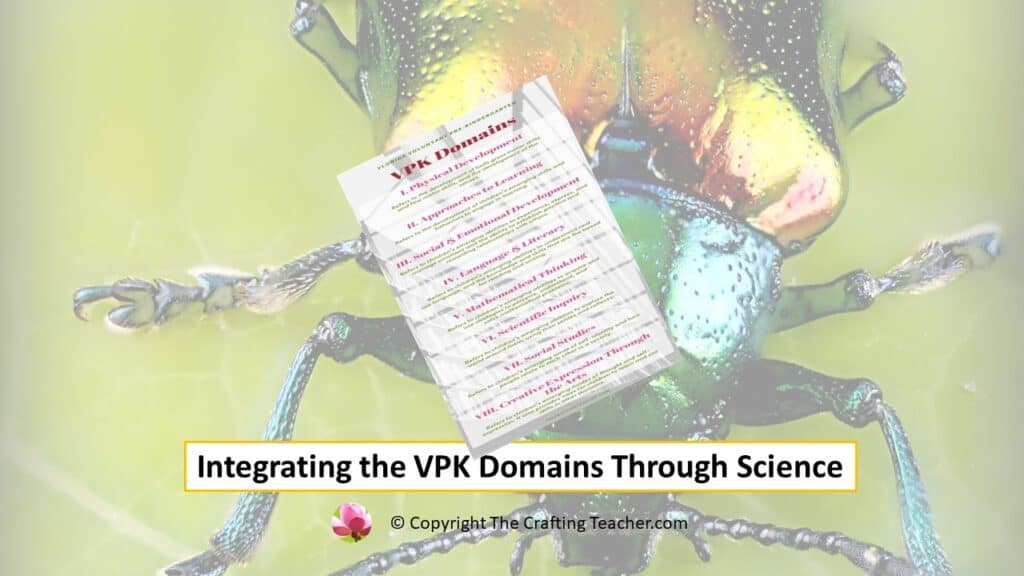Portfolios In The Preschool Classroom
Affiliate Disclosure: “This post contains affiliate links, which means I receive a small commission, at no extra cost, if you make a purchase using those links.”
A portfolio is an amazing tool to show the preschooler’s progress over time and a very detailed way to evaluate the child’s progress to assess his or her learning process and create special activities specifically designed for that child to improve his or her learning process if it’s needed.
A well-done portfolio is also very useful during a child’s evaluation and parent conferences, because it shows the learning story of the child, and it’s also a vehicle to nurture parent engagement in their learning process.
However, portfolios could be time-consuming and overwhelming for teachers, if they don’t use a sound system to put them together. This post intents to help you with this and create a clear picture of what are preschool portfolios, and how to put them together.
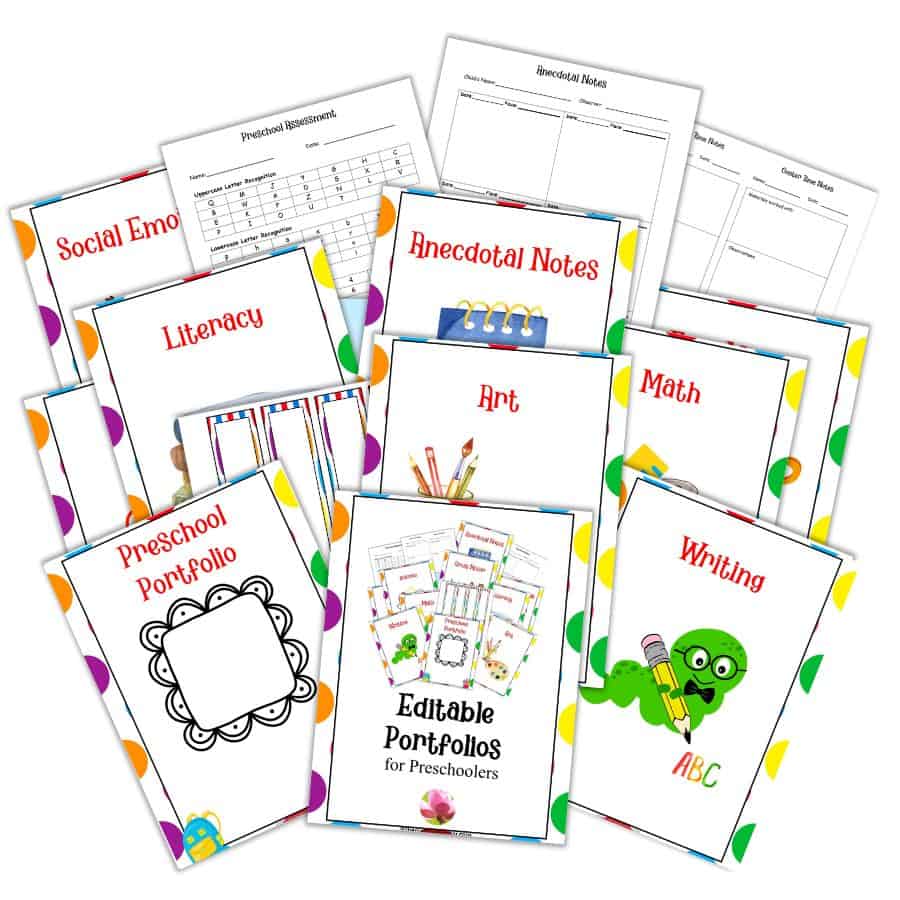
I have included a FREE editable printable set at the end of the post, as my gift for taking the time to read this post and to help you get started with portfolios in your classroom.
This printable includes:
- Two editable cover pages (color).
- One page with four editable spines (color).
- Twelve divider pages (color).
- One blank and editable divider page (color).
- Student Self-Portrait page (color & b/w).
- One Anecdotal Note Page (b/w).
- One Center Time Notes Page (b/w)
- One Assessment Page (b/w).
What is a Preschool Portfolio
A preschool portfolio is a collection of records that tell the story about a child’s learning process related to the learning goals and the program, the things that make him or her unique, the progress experienced, and his or her place in the community.
Importance of Preschool Portfolios
Well-done portfolios allow teachers to evaluate each preschooler’s overall performance and found out in what areas each child is above expectations or needs help. They also encourage preschoolers to reflect on their work, allow parents to see more clearly their child’s overall knowledge, and give the teachers a powerful tool to show parents the actual child’s progress using the child’s work samples and evaluation results during parent’s conferences and highlight the best traits of each child and their classroom as a whole.
Portfolios also help teachers observe, assess, and address the developmental level of each child in the different areas, be more intentional when creating individual lesson plans, and also see more clearly what works and doesn’t in their planned lessons.
Things to Include in a Preschool Portfolio
Before you start collecting what to put in the portfolio, decide how you are going to store the information. Some choices are:
- File crates – these are not expensive and don’t need too much space, but it’s good to add hanging file folders with folder tabs showing each child’s name.
- Manila folders – these are not that practical, in my opinion, because you need something else to store those folders, like a file cabinet or a crate.
- Binders – they are a little pricey and take more space to store, but I particularly love them because you can have everything secured and easy to look at.
- Page Protectors – these are not mandatory, of course, but I like to use them to place the children’s work. That way they can flip through their portfolio if they want, and look at what is placed in there, without damaging the contents.
Regardless of your choice, certain important items should be included in each portfolio, to better reflect the child’s learning process journey, including any input parents might provide.
Here are some items that, in my opinion, should be included in each preschooler’s portfolio:
- Portfolio cover – these are not mandatory but they make the portfolio look good and professional when you have your parent’s conferences. The cover should always have the child’s full name, maybe some graphic(s), and even the child’s picture.
- Self-Portraits – it is incredible how much a self-portrait says about a child because they tell the story of the child’s fine motor and self-awareness progress. I like to invite the preschoolers to draw a self-portrait every month and write their names on it. This self-portrait should always be dated, adding the first and last name of the child also.
- Anecdotal Notes and Observations – these notes are small objective records of the child’s spontaneous and important events, and they should reflect exact details of the situation observed, without any type of personal comments. They should be taken when the child is playing alone, in small groups, in large groups, and in various circumstances. They also should have the date of the observation. These little notes can be taken in sticky notes, a special paper on a clipboard, a tracking app, or any other idea that might be fit for you. Then there should be transferred to the child’s portfolio.
- Conversations With the Child – one of the most effective ways to gather information is by asking each child open-ended questions such as, “What are you building?”, “Why did you choose red to paint your horse?”, “Tell me more about your picture”, because the child’s answer will inform you of the development of his or her expressive language ability, and a clear picture of why that child is behaving the way he or she is doing. A better way to record the child’s answers besides writing them is to record a video or an audio clip, so the parents can see and/or listen in reality during conferences, instead of just reading.
- Assessments and/or Screening Tests Results – These types of tests are used to identify the skills and strengths that a child possesses, to find out if the child might be at risk of health, developmental, or social-emotional problems, to recommend an appropriate intervention and/or create individualized activities in all areas of development for each particular child, to ensure his or her success in school and life.
- Photographs of Child and Child’s Creations – nothing tells a story better than what you capture in a photo, especially those spontaneous moments when your child is doing something that reflects his or her personality and how his or her learning process is going. Another type of photo is those of the child’s individual or group projects, that might not make it to the portfolio. Photographs are incredibly helpful to show parents what is happening with their children in the classroom because they capture important moments that parents don’t get to see and might be forgotten by teachers when they are doing their assessments.
- Art, Math, Writing, Tracing, and Cutting Samples – all reflect the progress of the child in the different domains because teachers and parents can see clearly how the child’s development process is growing. Also, they are a good way to help the child develop his or her language and literacy domains, as well as a thinking process when you involve the child in selecting the pieces he or she wants to include, and allow the teacher to ask questions and record the child’s thought and reflections in his or her own words.
- Parent Meetings Summaries – these are important, not only to create a record of what teachers discuss with parents but also to collect the information that parents provide about their child (cultural, social, physical, religious, and any other aspect that forms part of the child’s background), that might be relevant to the child developmental and social-emotional process.
Using Portfolios to Evaluate Preschoolers’ Development
For a portfolio to evaluate the child’s development effectively, all the samples placed in them should be dated and organized chronologically and divided by domains or categories (writing, math, social-emotional, gross motor, etc.).
Once everything is placed in the right spot within the portfolio, the teacher can use it to evaluate the developmental level of the child. This evaluation should show the child’s progress toward the objectives and developmental expectations.
A teacher never should use portfolios to compare one preschooler to another, just the individual progress of each of them, to have a clear picture of each child’s abilities, strengths, achievements, weaknesses, and needs, as documented by the data that the store samples provide, and the teacher’s knowledge of the curriculum she or he is using and the stages of development.
Once the teacher gathers the information she needs, the teacher can plan a parent-teacher conference to discuss her findings with the child’s parents, using the portfolio as a tool to show them concrete examples of their child’s work.
Conclusion
In a preschool classroom where the use of tests is not appropriate, well-done and organized portfolios allow teachers to focus on the child’s learning process more effectively, and strengthen the relationship with the child and his or her parents, expanding the classroom reach and making the teaching-learning process more effective.
Pin It For Later
If are you in a rush and don’t have time to read the post and download the printable but want to save it for later, pin this to one of your Pinterest boards to have it available when you need it.
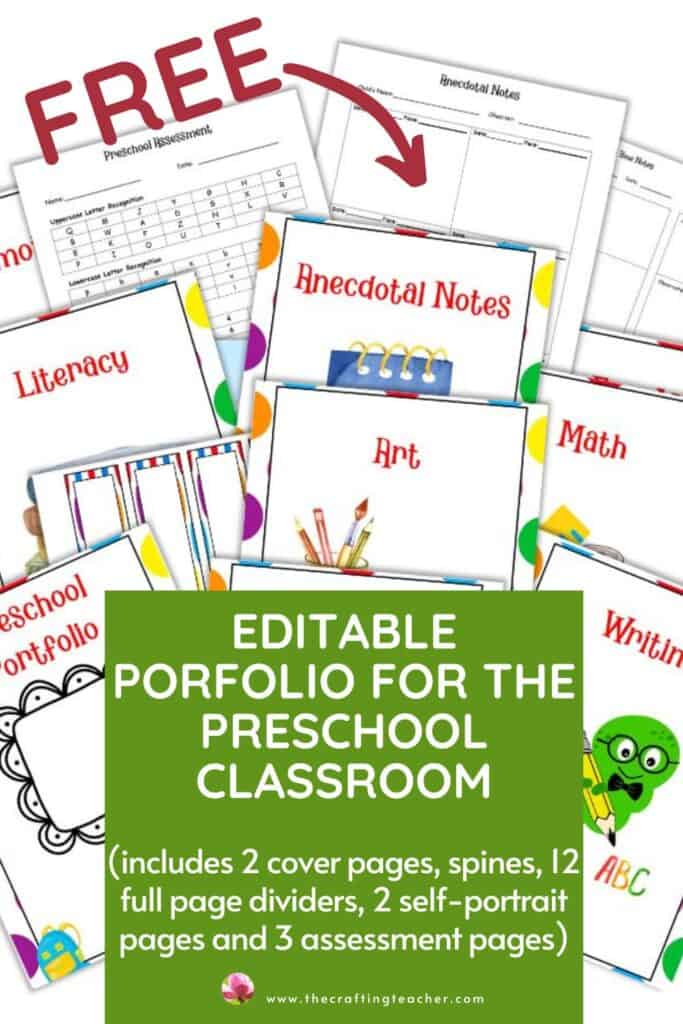
I wish that this school year that is just starting be a successful and happy one for you and your kiddos. Don’t forget to get your printable! You just have to click on the bottom below to download it and start using it.
Be happy, safe, and creative. I wish you well.
Love,

P.S. I hope you find this printable useful to create the portfolios you need for your classroom.

